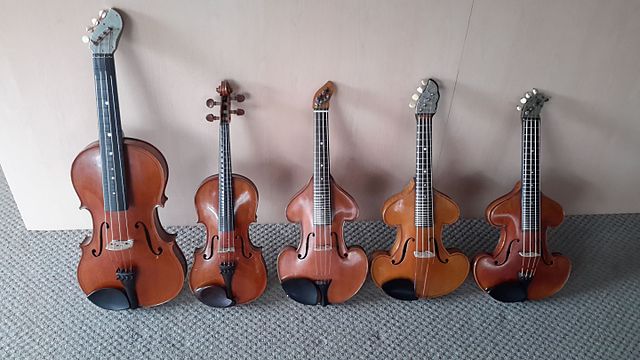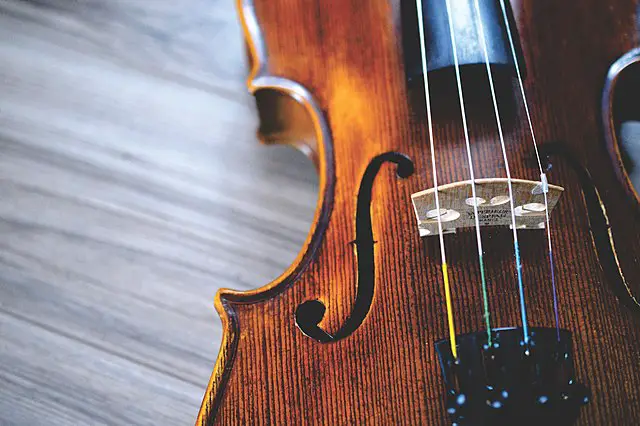Are you a music lover? Do you enjoy bittersweet melodies? If so, you’ll be interested in this article because you’ll get to learn about violins and their varying timbres.
Violins are among the well-known instruments worldwide because of their adaptability. They play different styles of music and in various tones.
But are all violins the same? Better yet, do all violins sound the same? Follow this article for answers!
Summary
All Violins do not sound the same for many reasons. Different types of violins produce different sounds. They also vary according to music genres, specific periods, and sizes.
For example, electric violins produce different sounds from classical ones. And baroque Violins produced different sounds from classical ones.
Table of Contents
What Types of Violins are There?
There are many different types of violins, divided by age and size.

Age
Violins have flourished across ages, from stringed instruments to electrical ones. Here’s a rundown of the different types and their development.
Pre-Baroque Stringed Instruments
The first violin ever made was named the “baroque.” Before it, some stringed musical devices resembled the violin. Examples of these are the viol, three-stringed Violetta, lira de braccio, and Byzantine Empire.
Both the viol and lira are held opposite to the chin, and the Byzantine Empire is gripped upright.
Meanwhile, the three-stringed Violetta is put under the chin.
The Baroque Violin
The baroque is the chief of violins. It was invented in the 16th century, donning a shallow and thick neck angle to provide tension on the strings. The pressure differs from one type to another. For example, Baroque violins have less tension than modern ones.
The baroque’s bow also differs from the modern’s. It’s shorter and shaped like an arrow.
The Modern Violin
The modern violin is known as the “classical violin”. It was made between the 18th and 19th centuries. The way it’s designed, it has a thin neck and high tension of strings. Musicians often assess other violins according to this one because it’s the most common.
What distinguishes the modern violin is its comfortable fittings. One of these is the chin rest, which facilitates the playing process.
Stroh Violins
The Stroh violin is named “violinophone” or “horn violin.” It has a loud sound because of its horn, which substitutes the soundbox. The concept of a violin without a sound box is unfamiliar, so it’s not as popular as the other types.
The Semi-electric Violin
The semi-electric violin creates music acoustically. It’s supplied with a pick-up to magnify the sound electronically. This type preserves the acoustic sound better than the electric violin.
The Silent Violin (or Electric Violin)
The silent violin’s name may deceive you, but it isn’t quiet. Instead, it is electrical.
As a result, it sounds like a muted, regular violin when not plugged into the amplifier.
Size
Violin sizes mainly vary to suit people’s different ages: children, teenagers, and adults. The sizes are measured as fractions of a whole. So violins that differ in size are called “fractional violins.”
Fractional violins’ sizes are categorized from the smallest to the largest as next:
- 1/64 violins: They are made for young children. However, they’re rarely found or used.
- 1/16 violins: These are suitable for children from three to five years old.
- 1/10, 1/8, and 1/4: They’re usually used by children aged four to seven.
- ½ violins: Half-size violins are for eight to ten-year-old children.
- ¾ violins: Used by young teenagers.
- Full-size violins: These are made for adults
What Is the Difference Between a Violin and a Fiddle?
If I gave you a violin and a fiddle, would you be able to differentiate between them? Probably not!
Design-wise, you can’t distinguish between a violin and a fiddle. The only variation is the style of music. If you’re playing classical, you’re playing the violin.
If you’re playing folk or country music, you’re playing a fiddle. Fiddle music is also associated with any foreign genre of music.
Do All Violins Sound the Same?
Violins don’t have similar sounds. For example, acoustic violin music is more intense than classical. Adding a delay can also change the sound of an electric violin.
On top of that, strings’ thickness affects the sound of violins. Thick strings generate low and clear music, while thin ones produce rich sounds.
Some people notice that the violin’s sound changes, even if they’re playing the same melody. This happens because when you hit hard on a particular string that isn’t set up well, it becomes loose. This will typically generate different tones and timbres and cause the music to change.
Do All Violins Use the Same Strings?
Strings are a significant contributor to the violin’s sound. So, violins with different strings won’t produce the same sounds. Even if violins are out of the same factory, they may not have the same strings.
For example, gut core strings are natural and made of animal guts. They produce complex and rich sounds.
However, steel strings are better because they generate clear and intense music. Synthetic core strings are the best, for they mix both the gut and steel ones.

What Makes One Violin Better Than Another?
‘How can I evaluate a violin?’ is one inquiry that most of you ask. Getting a violin is like shopping for a TV or any other device.
It’s easy to pick as long as you know what to look for. Therefore, I’ll give you some tips to help you figure out which violin is better or more expensive than others.
Material
The first aspect you should consider when buying a violin is its material. Next, you need to know the wood’s age, quality, and origin.
The wood should be solid, long-lasting, and powerful. The ideal violin should have a front plate made of spruce. Its rib, scroll, and backplate should be made of maple.
Tone
Having a pleasant sound is one of the essential factors when choosing a violin. It needs to be clear. A blurry tone can force the violinist to play too hard to produce a mellow sound, which leads to hard bowing.
To play wonderful music and work less, you need a prominent note.
Harmony
Balance is a tip you need to consider when getting a violin. It’s necessary to ensure that all strings and notes share the same strength and capacity.
For example, if a violin has a fragile cord, you’ll have to play loud on it or soft on other strings. Eventually, this makes you struggle to perform smoothly.
Craftsmanship
Craftsmanship is another aspect of helping you determine the quality of the violin. The techniques in constructing a violin show its value.
If it’s well-designed, you can play it for a lifetime.
First, make sure there’s no squeaking when you put pressure on the violin’s head and edges. Secondly, both sides of the violin should be the same in appearance.
Thirdly, the neck shouldn’t be curved. It needs to be fixed in a straight position. Finally, double-check that there are no gaps between seams and joints.
What are Beginner, Intermediate, and Advanced Violins?
Beginner violins don’t need many features to generate tones of high quality. They’re made for entry-level musicians, so they’re easy to use and flexible to suit the unexpected movements of learners.
Intermediate violins are mainly used by teenagers. Their material is maple wood, and they give a loud, rich sound with a clear tone.
Advanced violins are often equipped with extra features, and they’re made of expensive types of wood. As a result, they produce intense tones and are used by professionals.
How are Violins Priced?
Violins are priced according to their origin and appearance, but the quality, sound, and material also go into consideration.
There are five categories of violins that you can purchase.
Professionals or collectors usually buy collector violins ($15000 or more). They’re made of old/high-quality wood. Their setup is the best, and often, they have the manufacturer’s unique signature.
Advanced or semi-professional violinists use professional violins ($3500: $15000). They have a good setup, high-quality and proper dried wood, and high-level control.
Violinists who are veterans and skillful will go for advanced violins ($800: $3000). They have decent quality and high-level control, but they won’t be as luxurious as more expensive ones.
Student violins ($250: $1200) are common nowadays and can be bought online. They are typically mass-produced and sometimes have fair step-up and not well-dried wood. They’re usually made of traditional wood.
Object-shaped violins ($200 or below) are the cheapest out of all types. Unfortunately, they have neither a good setup nor traditional dried wood. Plus, they’re mostly factory-made and have low-quality control.
Wrapping up
Playing music is like magic. As wizards know how to choose the right tricks on stage, violinists should know how to select their suitable instruments. Now, hopefully you know how to choose your violin and whether all violins are the same.
